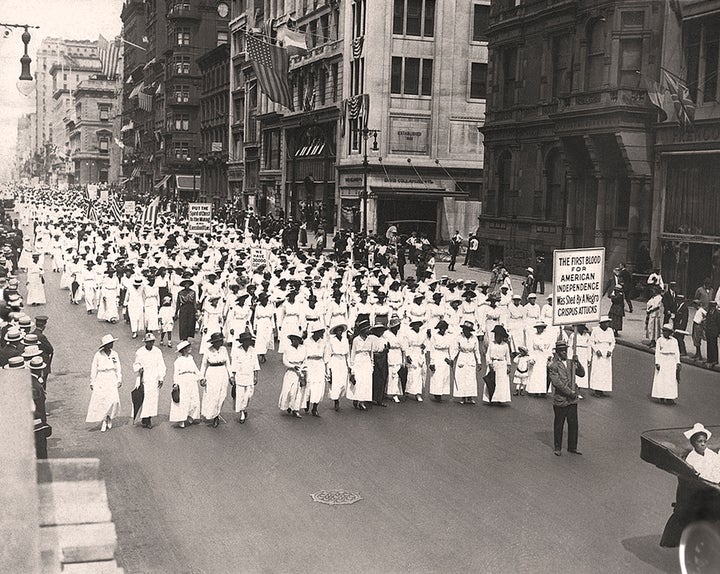by TARYN FINLEY
 A silent march in New York to protest the police treatment of blacks during riots in East St. Louis in 1917. They marched down Fifth Avenue on that summer Saturday without saying a word. PHOTO/Underwood Archives/Getty Images
A silent march in New York to protest the police treatment of blacks during riots in East St. Louis in 1917. They marched down Fifth Avenue on that summer Saturday without saying a word. PHOTO/Underwood Archives/Getty Images
The anti-lynching protest became known as the first mass demonstration by African Americans.
Google commemorated the 100th anniversary of the anti-lynching Silent Parade with a doodle on its homepage Friday.
Though not as widely known as other marches, the Silent Parade was a significant precursor to the civil rights movement. In a demonstration organized by the NAACP, about 10,000 people gathered in New York City on July 28, 1917, to march in silence down Fifth Avenue to Madison Square.
…
Women and children marched in the front, wearing white to represent innocence in the midst of the country’s racism, according to the Miami Herald. The men marched in the back, dressed in dark suits as a symbol of mourning and their willpower to fight for their rights.
Protesters demanded President Woodrow Wilson take action to protect the rights and livelihood of African Americans. They carried signs reading “Thou Shalt Not Kill,” “Your Hands Are Full of Blood” and “Mothers, do lynchers go to heaven?”
Huffington Post for more
